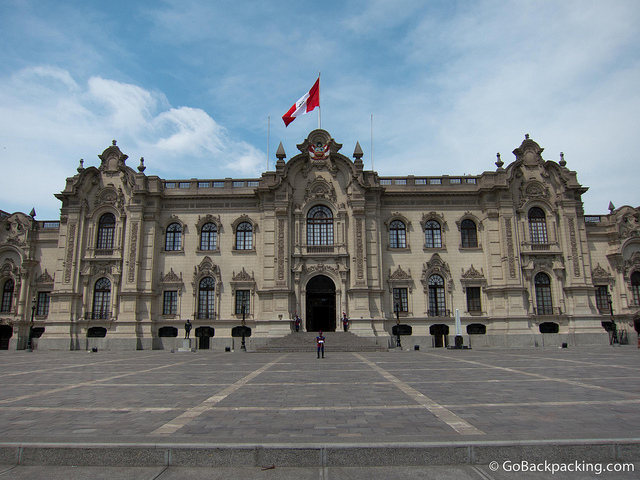
Why is this site called “Lima City of Kings?”
“Ciudad de los Reyes” is one of Lima’s nicknames, along with “La Gris” (The Gray) and “La Perla del Pacifico” (The Pearl of the Pacific), although the later name is used by several cities throughout the Pacific coastline of Latin America.
“City of Kings” might seem sexist or exclusive for modern people of the 21st century. What about the queens? Can’t women enjoy Lima too?
But the nickname was nothing so cynical. It comes from Lima’s first official name chosen by Francisco Pizarro, “City of the Kings.” It may sound like a bulky name today, but consider that you could translate it to “Kings City.” Also think about Los Angeles (The Angels) or Salt Lake City.
Pizarro chose the name because Lima was founded during an important Catholic holiday and feast, now known as Ephiphany or Three Kings’ Day. In everyday Spanish of the 16th century, they dropped the “Three” to simply refer to the holiday as “Day of the Kings.” So when the capital of a new empire was founded for the religious monarchy which ruled Spain, Pizarro chose to call it “Ciudad de los Reyes.”
Practicing Catholics may point out that the Epiphany feast is held on January 6, and Lima was founded on January 18. But that assumes use of the Gregorian calendar which has come to dominate world timelines today. The Spaniards of 1535 used the Julian calendar of Rome, and in 1535 the feast would have fallen on either January 18 or January 19.
The naming of Lima after a religious holiday is part of the city’s rich Catholic tradition, which includes having the first saint canonized in the Americas in Santa Rosa de Lima (as well as the most saints in any American city) and the Señor de los Milagros, or Lord of Miracles, processions in October.
Why isn’t Lima named “City of the Kings” today?
Maybe “Ciudad de los Reyes” was too bulky after all, because its residents stopped calling it that. But going from “City of Kings” to “Lima” would require two phonetic and pronunciation mutations.
Pizarro and the Spaniards did not choose an uninhabited area to found the new capital of Peru. The Rimac valley was populated by coastal fishermen who were subservient to the Incas. In addition to fishing the pre-Hispanic population of Lima also engaged in agriculture by using complex irrigation canals from the Rimac, Lurin and Chillon rivers.
So Pizarro found in what is now Lima a populated, green oasis in a mostly barren desert. A natural harbor in Callao would facilitate trade and communication with Spain, and he believed the Palomino Islands made the area easy to defend. For that time, the choice of location was a no-brainer.
The Incas’ name for the area was “Rimaq,” a Quechua word which means “He who speaks” or “The speaker.” They named it for an oracle which was built near today’s downtown Lima. In fact, “Rimaq” inspired the naming of the river valley and the district just north of downtown, Rimac, home to Cerro San Cristobal and the Plaza de Acho.
But the Quechua dialect of the native fishermen who lived on the central and southern coasts of Peru was different from the Quechua of their Inca rulers in Cusco. The coastal fishermen could not pronounce the “R” in Rimaq, so they called it “Limaq.” When the Spanish arrived, they seemed to prefer the simple “Limaq” over “Ciudad de los Reyes.”
So why isn’t Lima called Limaq?
But the colonists’ native Spanish tongues had trouble with the “Q” at the end of a word. Most Spanish words end in vowels, and those that don’t end in consonants pronounced at the tip of the tongue, not the back of the tongue. The stop consonant ending was difficult to say, so they dropped the “Q” and made it “Lima.”
The “Ciudad de los Reyes” name would take on new connotations as Lima became the royal seat which ruled over all of Peru, which initially spanned all of Spanish South America. Lima was historically a royalist bastion. Peru was the last country to gain its independence, which was won by Argentine and Colombian independence fighters.
“Lima” could take on gastronomic connotations given the use of lime in ceviche and so many other dishes in Peruvian cuisine. But the difference between a lime and a lemon in English vs. Spanish is a different conversation entirely, for another day.
